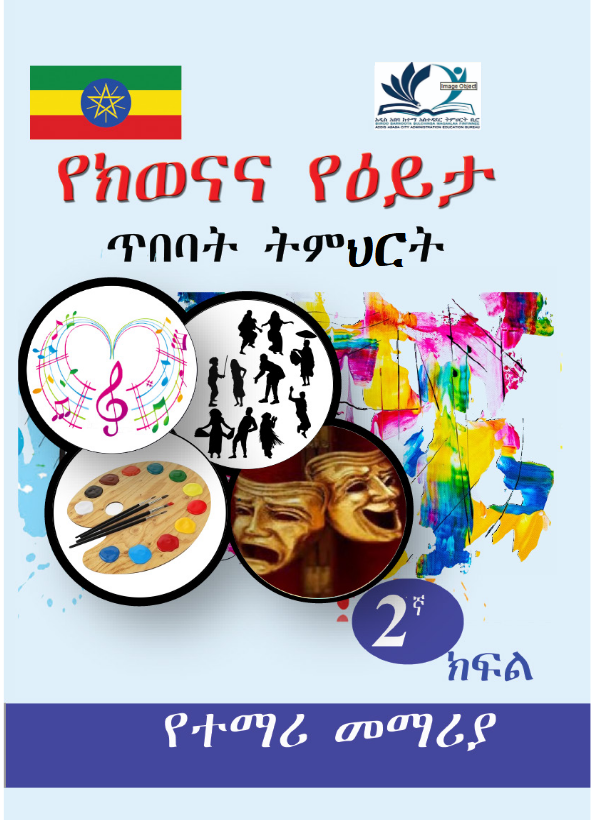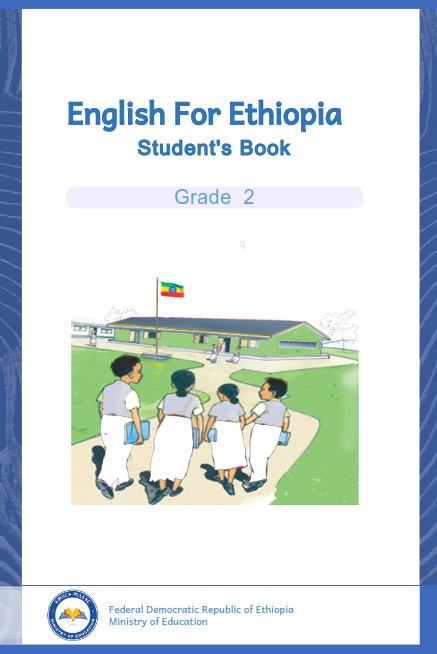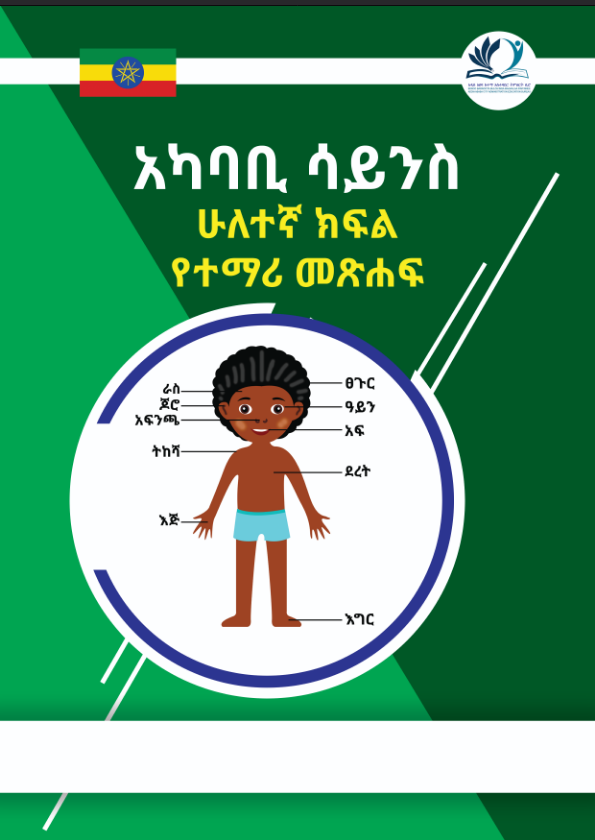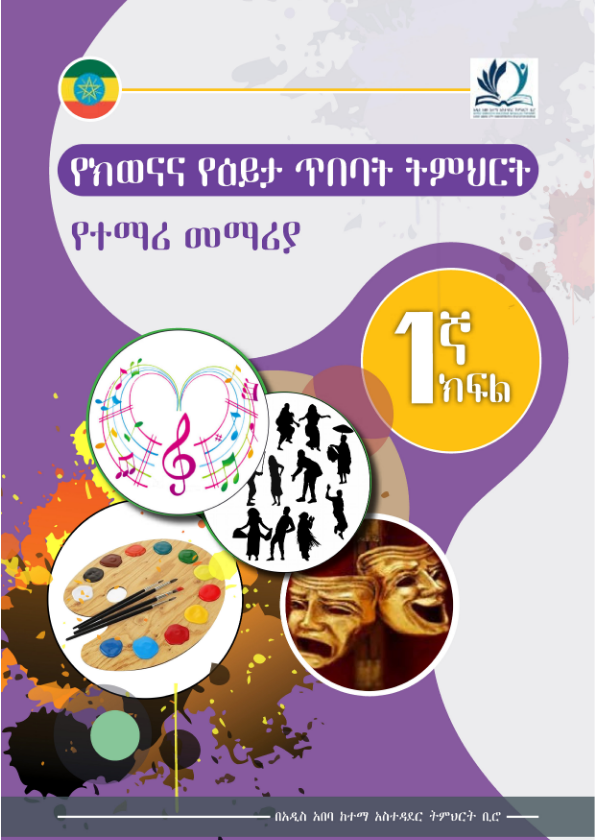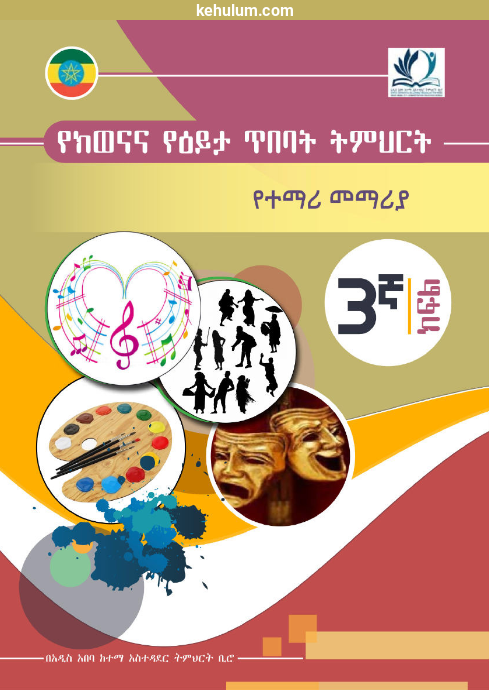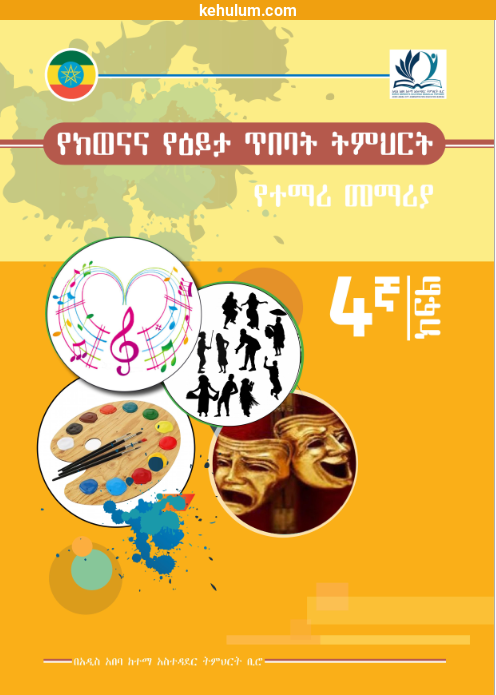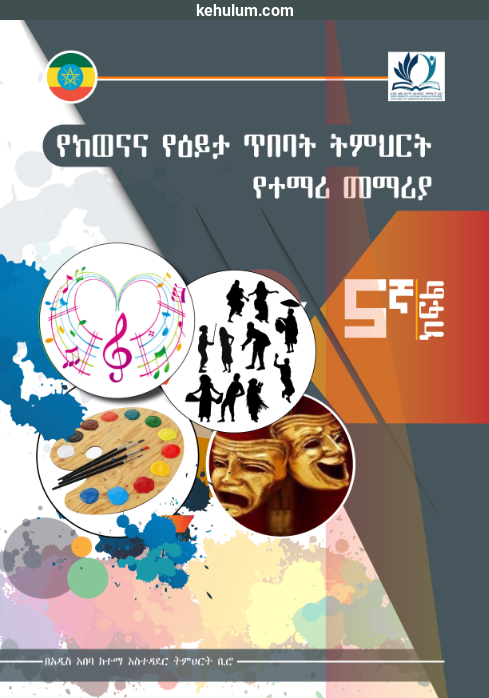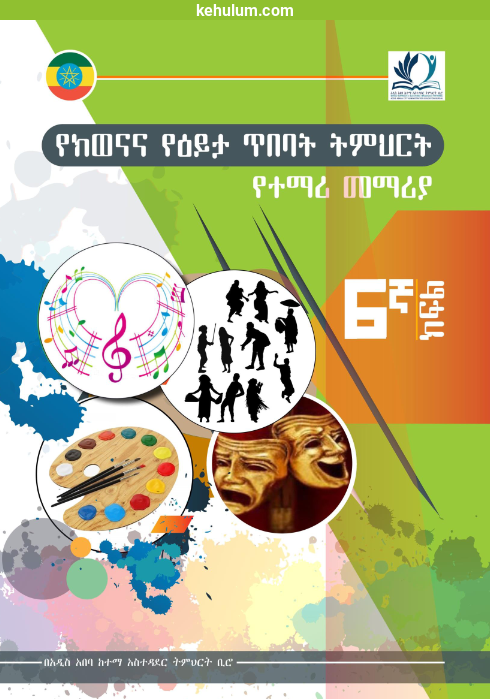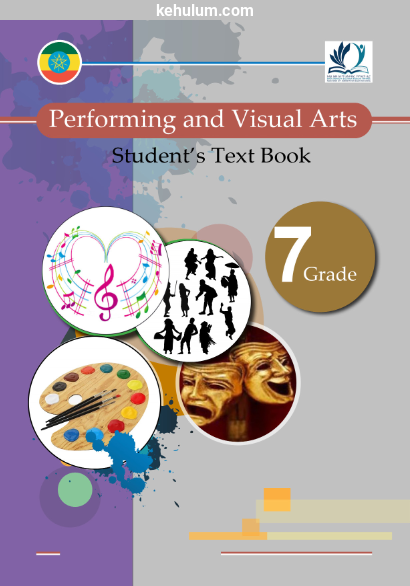This textbook contains 5 chapters (units) and is designed to develop students’ understanding and skills in music, dance, drama, and visual arts. Each chapter integrates hands-on activities to enhance creativity, cultural appreciation, and aesthetic understanding.
- ምዕራፍ 1: ጥበባዊ ግንዛቤ
- ምዕራፍ 2: ፈጠራን መግለፅ
- ምዕራፍ 3: ታሪካዊ እና ባህላዊ አውዶች
- ምዕራፍ 4: ሥነ-ውበታዊ እሴት (ዋጋ)
- ምዕራፍ 5: ጥመርታ ዝምድናና ትግበራ
Chapters Overview
Chapter One: Artistic Understanding (ምዕራፍ 1: ጥበባዊ ግንዛቤ)
This chapter helps students understand the basic elements of art and performance. It introduces musical notes such as melo sound and half notes, followed by simple free movement or dance exercises that encourage body coordination and expression. Students also engage in basic role-playing games, photo observation, and identifying familiar images from daily life. These activities build artistic awareness and imagination in a fun and interactive way.
Chapter Two: Defining Creativity (ምዕራፍ 2: ፈጠራን መግለፅ)
In this chapter, students learn how to express creativity through different forms of art. They practice identifying and using musical notes, performing free movements or dances, and engaging in creative role-playing games. Visual art activities such as line drawing and creating simple shapes help them explore imagination through drawing. The goal is to help students understand creativity as both thinking and doing.
Chapter Three: Historical and Cultural Contexts (ምዕራፍ 3: ታሪካዊ እና ባህላዊ አውዶች)
This chapter explores the connection between art and Ethiopian culture. Students learn about national music, traditional dances, folk tales, and drama. They study how colors have cultural meanings and how art reflects Ethiopian traditions. Activities include storytelling, solving puzzles, and recognizing symbols and colors from Ethiopian flags. This helps students appreciate their cultural identity and heritage through art.
Chapter Four: Aesthetic Value (ምዕራፍ 4: ሥነ-ውበታዊ እሴት)
The fourth chapter focuses on appreciating beauty and value in art. Students observe and discuss various artistic performances such as music, dance, acting, and visual arts. They learn how to recognize talent and effort in themselves and others, fostering respect and admiration for artistic work. This chapter encourages emotional connection and critical thinking about what makes art beautiful and meaningful.
Chapter Five: Implement Our Relationship Coalition (ምዕራፍ 5: ጥመርታ ዝምድናና ትግበራ)
The final chapter connects performing and visual arts to other subjects and daily life. Students learn about the role of music, dance, theater, and visual arts in communication, education, and teamwork. They explore how art supports learning in other areas and strengthens relationships within the classroom and community. The chapter emphasizes cooperation, creativity, and the value of art in everyday experiences.

